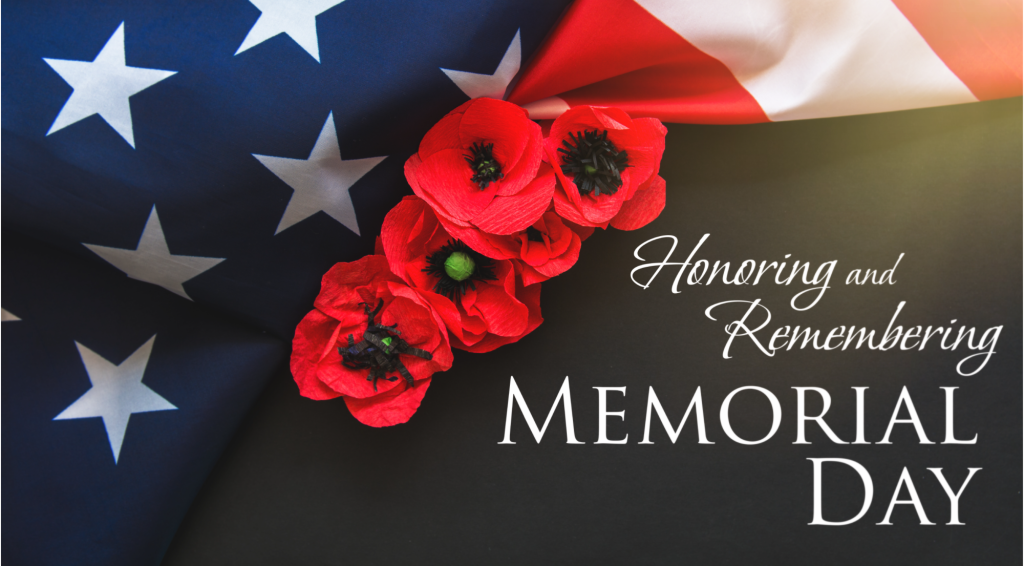Holidays
How Decoration Day Becomes Memorial Day
In the United States, the transformation from Decoration Day to Memorial Day represents an important evolution in how we honor and remember our fallen military heroes. It all began in the aftermath of the devastating American Civil War, a conflict that claimed the lives of countless soldiers from both the Union and Confederate sides. As communities grappled with the immense loss, they began organizing ceremonies and tributes to pay homage to the fallen. These events involved the decoration of soldiers’ graves with flowers and other meaningful symbols, giving rise to the name “Decoration Day.”
Over time, the significance of this observance expanded beyond the Civil War. Communities across the nation embraced the tradition of honoring fallen soldiers, extending the practice to include those who perished in subsequent wars. The term “Decoration Day” eventually gave way to “Memorial Day,” reflecting the broader scope of remembrance for all American military personnel who made the ultimate sacrifice.
In this blog, we will delve into the historical journey of how Decoration Day transitioned into Memorial Day. We’ll explore the origins of Decoration Day, the key figures and events that contributed to its evolution, and the factors that led to the establishment of Memorial Day as a national holiday. Join us as we uncover the rich history behind this important day of remembrance and reflect on the significance it holds in honoring those who selflessly served their country.
The Evolution into Memorial Day
Decoration Day, which eventually became Memorial Day, has its roots in the aftermath of the American Civil War. The Civil War, fought from 1861 to 1865, resulted in a tremendous loss of life, with hundreds of thousands of soldiers from both the Union and Confederate sides perishing in battle.
In the years following the war, communities across the United States began holding ceremonies and tributes to honor and remember the fallen soldiers. These events often involved decorating the graves of the soldiers with flowers, flags, and other symbols of remembrance. The act of adorning the graves gave rise to the name “Decoration Day.”
The precise origin of Decoration Day is disputed, as various communities claim to have been the first to establish such observances. One of the earliest recorded instances of a Decoration Day ceremony was organized by a group of freed slaves in Charleston, South Carolina, in 1865. They honored Union soldiers who had died while being held as prisoners of war. This event took place at what is now known as Hampton Park.
The practice of Decoration Day gained momentum in the years following the war, with communities throughout the country holding similar commemorative events. However, it was not until the late 1860s that the idea of a national observance began to take shape. General John A. Logan, a former Union general and the commander-in-chief of the Grand Army of the Republic (an organization of Union veterans), issued a proclamation in 1868 designating May 30th as a day for “strewing with flowers or otherwise decorating the graves of comrades who died in defense of their country during the late rebellion.”
May 30th was chosen as the date for Decoration Day because it did not coincide with any significant battle anniversary. The first national observance of Decoration Day took place on May 30, 1868, at Arlington National Cemetery in Virginia, where General Logan presided over a ceremony that involved the decoration of both Union and Confederate graves.
The Federal Recognition
Over time, Decoration Day became an established annual observance, with communities across the United States holding ceremonies to honor fallen soldiers. The day gradually evolved beyond the Civil War and encompassed remembrance of soldiers who had died in subsequent conflicts as well.
In 1882, the name “Decoration Day” began to shift towards “Memorial Day.” The transition to the name “Memorial Day” gained momentum after World War II, when the day started to honor all American military personnel who had died in any war, not just the Civil War. The term “Memorial Day” was officially recognized in federal law in 1967, and in 1971, it was declared a national holiday to be observed on the last Monday in May, providing a three-day weekend for commemoration and remembrance.
With the federal recognition, Memorial Day took on an expanded meaning. It became a day not only to honor those who died in the Civil War but also to remember all servicemembers who made the ultimate sacrifice in defense of the United States. The solemnity of the holiday grew, and it became a time for reflection, remembrance, and gratitude towards those who gave their lives in service to their country.
Conclusion
From its humble beginnings as Decoration Day, the holiday we now know as Memorial Day has evolved into a national day of remembrance for all fallen servicemembers. The transition from individual communities adorning gravesites with flowers to a federal holiday observed across the country underscores the deep appreciation and respect Americans have for those who made the ultimate sacrifice. As we celebrate Memorial Day, let us remember the historical significance behind this holiday and honor the brave men and women who gave their lives in service to our nation.





